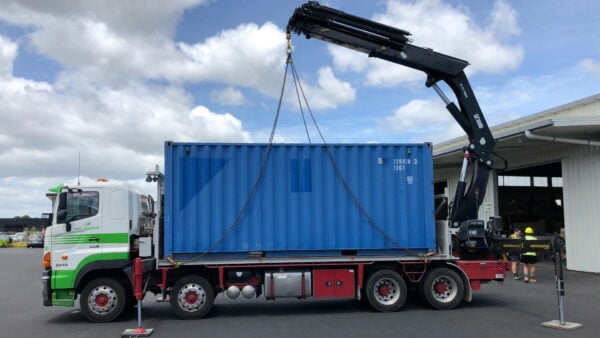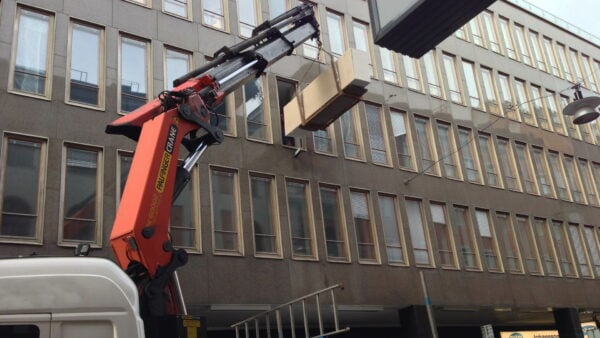Four different vehicles, but one risk factor that needs to be considered before operating or lifting with them. The bigger the object being carried, the more wind resistance it creates, so the more force will be exerted on the machine.
EWPs
Scissor lifts, boom lifts and cherry pickers have a wind rating on the data plate. Outdoor-rated EWPs must be capable of withstanding a wind speed of 12.5m/s or 45km/h. However, this assumes that the EWP is not carrying anything wide and flat such as a piece of signage, or a sheet of plywood. Operators in the EWP must understand that large, flat items can act like a sail. Operators must also be able to hold onto these items in the wind.
Wind speed must be estimated using the Beaufort scale or measured using an anemometer. The Beaufort scale is somewhat subjective; if there’s any doubt, operators should not operate the EWP. It’s critically important that, for jobs such as installing signage or panels, operators err on the side of caution and delay the job if the wind is strong or gusty.
Some EWPs are not wind-rated; they should only be used indoors or in very sheltered areas.
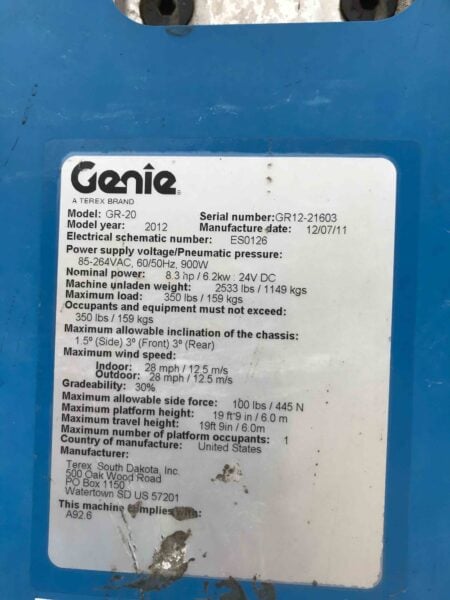
Forklifts
Forklift stability is defined by a stability triangle that can be drawn between the two front wheels and the centre of the rear of the forklift. The centre of gravity of the forklift must remain within the triangle otherwise the forklift will tip over. Forces acting on the forklift, such as those from turning, braking and accelerating, move the centre of gravity. Wind gusts can also affect the centre of gravity by pushing on the forklift. Forklifts don’t come with wind ratings. However, the higher the mast is lifted, the more leverage any wind gusts will have on the forklift, and they could be enough to tip the forklift over if the load is heavy enough and the surface area is large enough to catch the wind.
If you are lifting loads in windy weather, it is advisable to strap them down and not lift too high. Take it slow so that you don’t create large lateral g-forces that could destabilise the forklift if the wind gusts at the wrong time.
Strong winds more readily affect forklifts that are operating outside lifting large loads with flat sides such as containers. However, if operated in a warehouse that has two sets of doors open, the wind can blow through and create an issue. Any wind speed around 25km/h should be considered higher risk for lifting. However, it’s fine to drive the forklift with small loads on the forks at ground level in these winds.
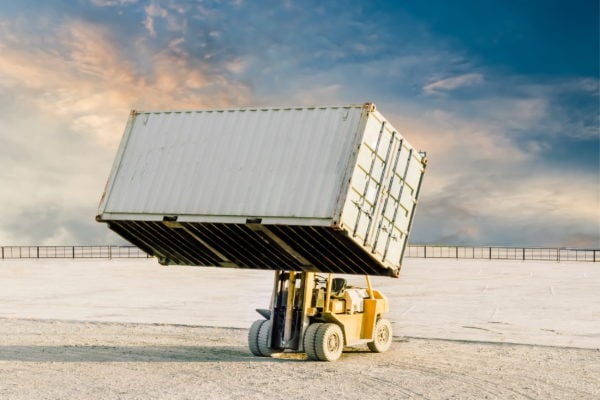
Click here to view forklift training.
Sideloaders
Sideloader units do not usually quote a maximum wind speed. However, as they lift large, flat-sided items (predominantly containers), strong winds can deliver enough force to tip a sideloader over. A larger shipping container will create more drag, but the heavier the container is, the more resistant it will be to gusty wind.
Sideloaders should not be operated in windy conditions where the wind is pushing sideways in relation to the position of the truck or trailer as it can cause a rollover.
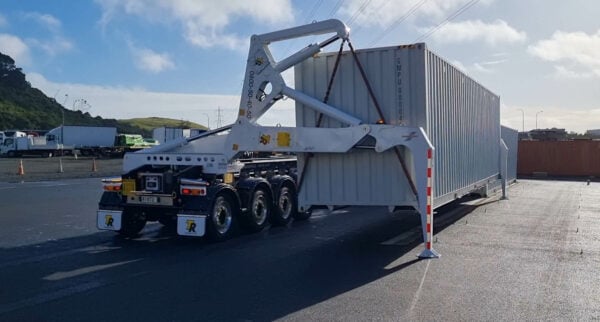
View sideloader training here.
View rollover prevention training here.
Truck loader crane
Truck loader cranes are frequently used to load large objects such as prefabricated panels, mobile offices and containers. The wind load on these flat-sided items can be significant. Operators should keep these types of loads as close to the ground as possible and avoid using the machine when there are windy conditions. Recommendations for mobile cranes are 9.8m/s or around 35km/h with regular loads that do not present large, flat sides to the wind; it is advisable to follow similar limits.
